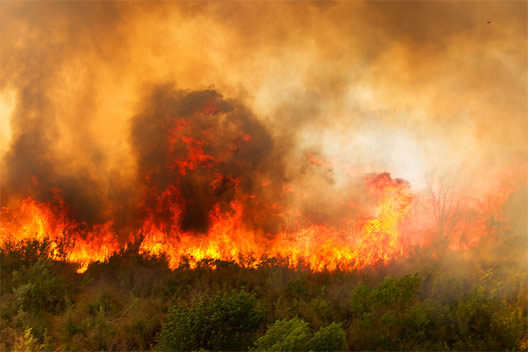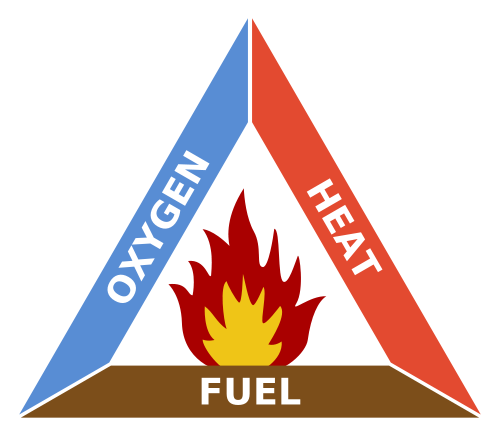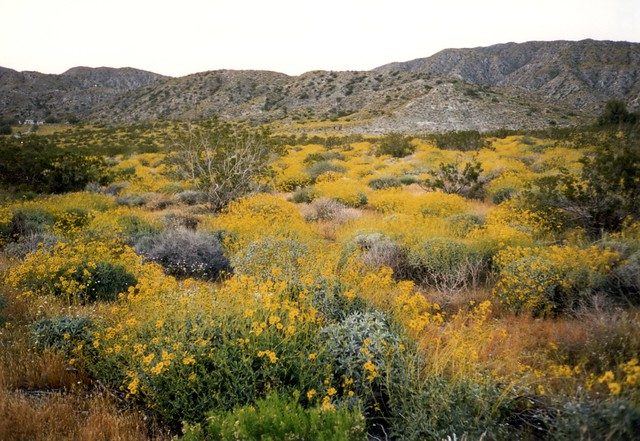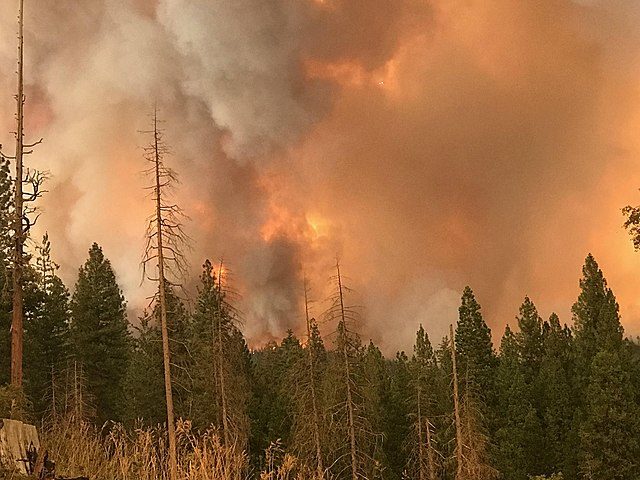Wildfires in California are happening more often and becoming more intense, with 2018 seeing the deadliest and most destructive wildfire season in California history. By now, most Californians know that the hotter and drier conditions created by climate change are a major contributing factor, made only worse by California utilities’ unshielded power lines.

To start and sustain any fire, it takes three things: oxygen, fuel, and heat—the so-called “fire triangle.” Probably the most overlooked part of the triangle is fuel: the fire-prone, mostly non-native vegetation that powers these tremendously destructive wildfires. While Californians can eventually hope to play a leadership role in eventually reversing climate change (heat), we can start changing the fuel side of the equation all on our own, immediately, by restoring native California plants.

One of the first things Californians can do is properly study the issue of fuel. It is important that Californians and our elected officials understand how much these fires have been increased due to the infestation of invasive exotic plants, starting hundreds of years ago with the arrival of the Spanish, and continued through to the present day.
For example, many people assume that California’s signature fire prone golden hills in summer are native. In fact, California’s hills have become infested with grass originally introduced to California to feed cattle. California’s hillside in summer originally looked green, like Oregon’s, as Oregon shares many native plants with California and its invasive plant problem isn’t as severe or widespread.

These fire prone invasive variety of non-native grasses, trees, bushes, and shrubs have been proven to have caused and made worse some fires here in California, the most notable being the Oakland Hills fire of 1991. Rick Halsey, director of the California Chaparral Institute in Escondido, told the San Francisco Chronicle a few years ago that “dry, non-native grasses that have replaced chaparral over the years caused the tinder-box conditions that led to huge fires that burned large swaths of San Diego County in 2003 and 2007.”
In that article, Halsey further argues that while the Forest Service throws a lot of money at controlled burns to remove the highly flammable non native chaparral, removing invasive species without the restoration of native plants won’t work. “That’s not the best way to deal with the problem,” he says. “Where one plant has been removed, unless aggressive weed abatement is pursued, something else, often something that catches fire more quickly, will take its place.”
Travis Bean from UC Weed Science at UC Davis argues in the UC Weed Science blog that despite all the massive news coverage of the recent catastrophic wildfires, very little real information is getting through. “There’s an apparent tendency,” he writes, “to lump fires into very broad categories (e.g., ‘forest’ fire, ‘brush’ fire, ‘wildfire’) that tell managers, the public, and policy makers little about the actual fuel. Without letting the public and policy makers know that our wildfires are being dramatically worsened by fuels from invasive plants, it’s difficult to build the political will and support for efforts to do a better job managing these fuels. As scientists and managers, simple data on the fuels involved and the antecedent weather would allow us to provide timely predictions on not just when and where these fires will strike, but also where and when we should be investing in fuel breaks, restoration, or other management actions that can save money, resources, and lives.”

An example of how this could work is a Nature Conservancy effort in Oregon that is replacing one of the key culprits contributing to wildfires in the west, cheatgrass, with native fire-resistant plant species hoping to reduce fires in that area. It’s time legislation was pushed in California to do a very similar kind of project on a bigger scale. Firefighters call it firescaping, which is landscaping with fire resilient plants.
The government of California should research and start to mandate all public entities must firescape all public land with fire resilient native species. Native species are not only better for preventing fires but better for all the wildlife in California as it’s their natural source of food. Another helpful piece of legislation would be to incentivize all landowners to plant native fire resilient plants and to push cattle farmers to feed their cattle with native grasses.
However, if California’s state government is successful in firescaping the land under its jurisdiction, it will eventually have to contend with a startling fact: 45% of California’s land area, including the bulk of California’s public land, is owned and controlled by the federal government. Ideally, the Bureau of Land Management (BLM), the National Forest Service, and the National Parks Service would work in partnership with California to perform weed abatement of fire-prone grass after prescribed burns, and then plant fire resilient natives to replace the invasive plants.
The reality is that the federal government budgets money for fighting wildfires, but there is much, much less money for prevention, not to mention native firescaping. Two megafires in the vicinity of Yosemite, the Rim Fire in 2013 and the Ferguson Fire of 2018, show the very real danger to Californians of federal mismanagement of public lands. If the federal government continues to drag its feet on fire prevention, Californians should seriously considering asking our Congressional delegation to introduce legislation to transfer federal public lands in California to the stewardship of our state government.

In any event, Californians don’t have to wait for better federal land management or the fruits of a successful global effort against climate change. By concentrating on restoring California’s native environment at home, on the lands we do control, we can go a long way to solving the wildfire problem on our own.
